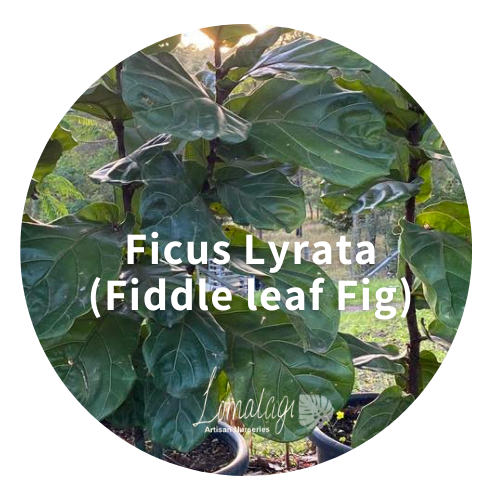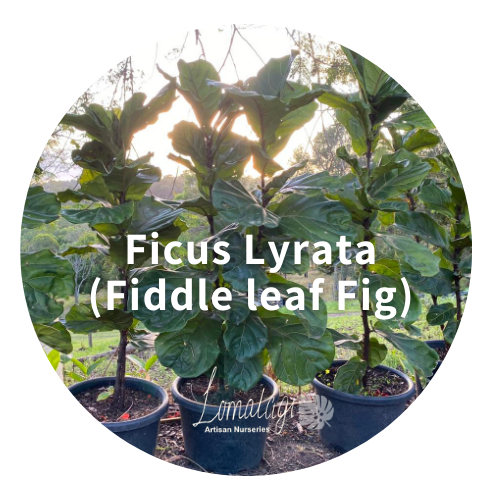Lomalagi Artisan Nurseries
Ficus Lyrata
Ficus Lyrata
Couldn't load pickup availability
Ficus Lyrata (Fiddle leaf fig)
The mighty Fiddle leaf Fig is an absolute showstopper! It can reach towering heights and is an excellent plant to have indoors with its interesting, lush & large leaves. Place your plant near a window to receive filtered light and turn every few days so all leaves receive adequate sunshine. Or add interest to your tropical garden and plant outside in a sheltered position to protect the leaves from wind damage. Just a reminder; fiddle leaf fig is toxic to people and pets.
Light requirement: Partial shade.
Water requirement: Low to moderate. Be mindful of overwatering as it can lead to leaf drop and root rot.
Watering frequency: Water regularly to keep soil moist, and when soil is dry to touch.
Soil: Well-draining, loamy, fertilised soil.
Skill level: Suits Beginner/ Immediate Green thumb.
Growth rate: Moderate growth. Optimum humidity levels for good growth are in between 30-65%.
Suitable for container gardens: Yes
Mature Height : 5m planted in the garden, or 1-2m high potted
Mature Width: 1m width potted
Seasonality: Evergreen
Drought Tolerant: Yes
Frost Tolerant: Over 10 degrees Celsius
Wind Tolerant: No
Leaf colour: Deep green
Leaf shape: Heart-shaped leaves, ovate with 'wiggly' outline on edge of leaf (reminiscent of a fiddle!). Don't forget to wipe your leaves with a damp cloth to keep them healthy & boost photosynthesis, if indoors!
Leaf Variegation pattern: There is another species called Ficus Lyrata 'variegata' that does produce a dazzling mix of green and cream leaves, however this is uncommon.
Some helpful tips for caring for your Fiddle leaf Fig-
Yellow leaves- In the event of yellowing leaves, there is a possibility that the plant has a bacterial infection. This issue may be more difficult to address, but it is recommended to remove any affected leaves and repot the plant with new soil. It is advised to isolate the plant until it has recovered.
Brown leaves- Root rot can occur if the Ficus Lyrata is overwatered or sitting in water, resulting in dark brown spots or browning edges. Be sure to check for brown and mushy roots and remove them, trim back any spotted leaves, and repot the plant in fresh, dry soil. It is important to adjust your watering schedule to prevent further issues.
Leaf sunburn or leaf scorch- If you observe discoloration or faded areas on the upper surface of the leaves, it is possible that your plant is receiving excessive direct sunlight. Consider moving your plant to an area with gentle, partially-shaded morning light for optimal growth.
Dropping leaves frequently- If your Ficus Lyrata is shedding green leaves, it may be due to insufficient lighting or exposure to extreme temperatures. Evaluate the plant's lighting conditions and relocate it away from drafty or overly warm areas.
Share






